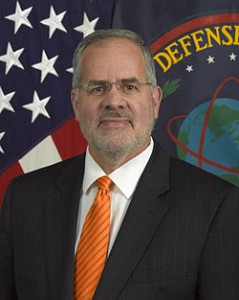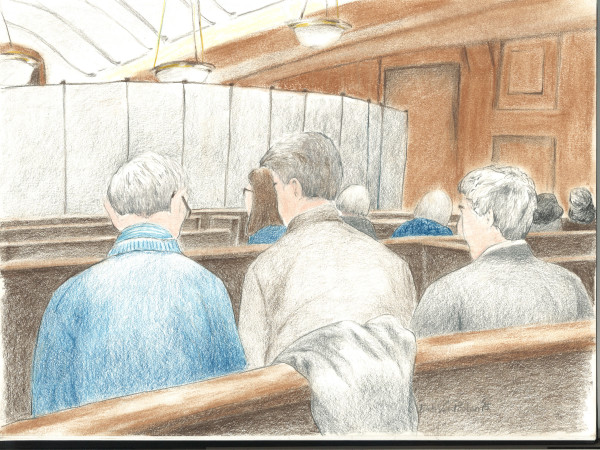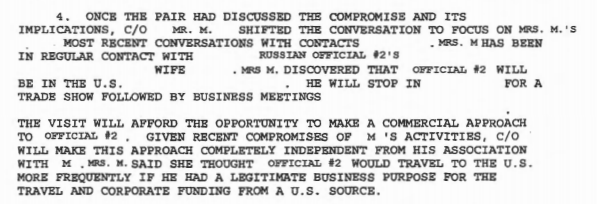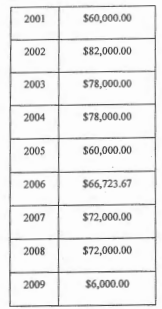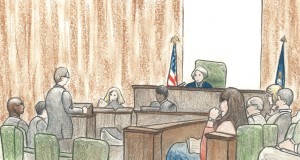Merlin’s Testimony: “It’s Lie,” “I Don’t Remember,” and “I Don’t Know”
I’ve finally gotten a hold of the transcript for Merlin’s testimony in the Jeffrey Sterling trial (working on getting something I can post; he was apparently difficult to understand, in any case, so not even people present understood all this).
Reading it, it’s clear why the government has claimed, going back to 2011, that Merlin’s imminent death from cancer meant he should not testify. I don’t dismiss the gravity of his health problems (and also note that he is apparently on pain killers, including Oxycontin, which may have affected his testimony here). But he was a terrible witness, and pretty clearly lying on a great number of accounts.
But I’m interested in specifically how he denied things that appear either in James Risen’s book or in CIA cables.
It’s lie
About two things, Merlin was adamant. The first is the same thing that really elicited the Merlins’ ire when they read Risen’s book: the report that they were defectors.
Trump: It says you defected to the United States. Is that accurate?
Merlin: It’s lie.
Note, given the timing and the claim that Merlin might have been involved with the Soviet Union’s 1980s-era nukes, I entertain the possibility that they defected to some other country before moving to the US in the early 1990s. That’s true, especially, because when Merlin got his passport renewed in 1999, he did so from a country the name of which got substituted (meaning it probably wasn’t Russia; the original appears to be 9 characters long, so Ukrainian is a possibility), though it could just be a successor state. Whatever the case, the timing of the Merlins’ arrival in the US and their certainty with which the government repeatedly said they did not defect convince me that Merlin is correct here: they were not defectors.
Similarly, Merlin is equally adamant that the description in Risen’s book that Merlin tried to warn the Iranians of “flaws” in the blueprints he handed them was not true.
Trump: In paragraph 64, the book represents on page 205 that the letter was warning the Iranians as carefully as you could that there was a flaw somewhere in the blueprints. … Was that the purpose of the letter?
Merlin: It’s, it’s lie. [Later] I don’t see flaws here. It was just incomplete information.
While it’s certainly true that Merlin’s and the government’s understanding of the significance of the incomplete information in the blueprints was very different — elsewhere Merlin claimed that a real fireset schematic was “100 times more complicated than it was shown in drawing and the schematics” — it is also true that Merlin appears not to have known about the deliberate flaws US scientists put in the blueprints. So he is correct that the representation in Risen’s book is incorrect on that point.
I don’t remember
Then there are a series of questions about which Merlin likely feels some shame, about which he professed not to remember the correct answer. One of those topics pertained to whether his wife also spied (note, Merlin and the CIA both are almost certainly lying about how much Mrs. Merlin knew about this operation).
Trump: Did your wife at the time also agree to cooperate with the CIA?
Merlin: No.
Trump: Did she eventually?
Merlin: She didn’t know anything about it.
Trump: She didn’t know anything about what you did, is that correct?
Merlin: Yes.
Trump: But she was interviewed from time to time by the CIA as well?
Merlin: I don’t remember. Probably.
Merlin’s wife remained on the CIA payroll after he claims he stopped getting paid. Surely he knows that. But he’d prefer not to admit it.
Another of the topics about which Merlin forgot the correct answer came in response to a defense question about whether he ever used his American PO Box in communications with Iranians.
MacMahon: Did you testify earlier today that in all of your communications with the people, the Iranian institutions or otherwise, that you, you didn’t use any kind of an American address in any of those documents?
Merlin: I don’t remember.
Now, it’s possible Merlin’s earlier answer on whether he had used his PO Box on correspondence with Iran is correct: that is, it may be that he always ignored CIA’s orders to do so, and CIA simply never found out about it (perhaps in part because the case officer before Sterling did not track that correspondence as closely as Sterling did). But the CIA record shows that he first started balking about using his actual geographic location about a year before going to Vienna, but before that had publicly used his PO Box.
I don’t know
Then there are a series of questions where Merlin clearly either had forgotten key details, or wanted to avoid admitting the truth. For example, when asked by prosecutor Jim Trump (who had met with Merlin before this deposition to go over it) whether this was a rogue operation, Merlin first offered up that it was a “brilliant” operation (elsewhere he took credit for Iran not have gotten nukes since 2000). But when asked a question to which the answer is clearly yes — whether it took significant persuading for Merlin to complete this operation — he claimed he didn’t know.
Trump: It states that prior — prior to your trip to Vienna now is what is being discussed here. “It had taken a lot of persuading by his CIA case officer to convince him to go through what appeared to be a rogue operation.” Is that accurate?
Merlin: It was not rogue operation at all. It was brilliant, brilliant operation.
Trump: Did it take a lot of persuading by you — excuse me, by your case officer to go through with the operation?
Merlin: I don’t know.
Merlin walked out of the meeting on final preparations, after having walked out of the meeting prior. That wasn’t, apparently, because Merlin cared whether this was rogue or not, but because he thought the risk to him was too great for the money he was being paid. But the answer to whether it did take persuading should have been yes.
Just as interesting, when Merlin was asked by defense attorney Edward MacMahon whether he had ever before this deposition told the FBI or CIA he had destroyed the disk on which the final version of the letter to the Iranians, he said he didn’t know.
MacMahon: The first time you–you were, you were asked questions over, over a space of many years, and you never told the FBI at all that you had destroyed the disk that you took to Vienna, did you?
Merlin: I don’t know, but there was, was no reason to bring it back. It just put myself in additional danger to have such disk in possession. If somebody stop me and read this disk, I’m in trouble.
MacMahon: Okay. But you didn’t tell the FBI, you didn’t tell anybody until today as a matter of fact that that’s what your story was as to what you did with the disk in Vienna, correct?
Merlin: I don’t know, but again, it was no reason to keep this disk when action was, operation was accomplished, and no reason to keep it as a drawing, as letter, as whatever.
The answer is clearly no, but Merlin doesn’t want to admit that for some reason (I’ll return to the significance of this question in a future post).


